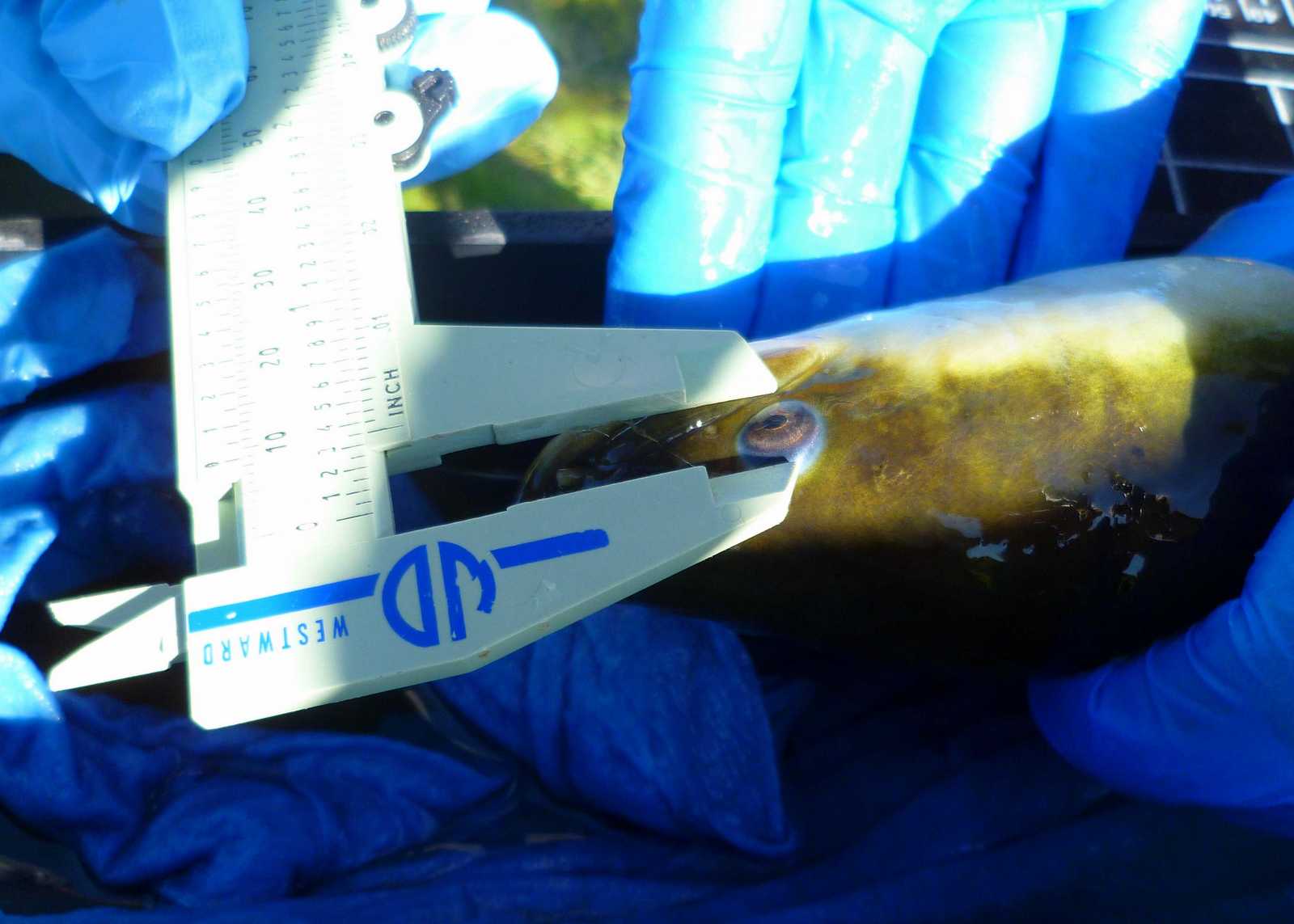
Slimy, snake-like and worth protecting. That’s the American eel. This fish, once abundant in Lake Ontario and the St. Lawrence River, is fighting the odds to survive. The St. Lawrence River Institute of Environmental Sciences is working with partners to help the eels endure.
The American eel’s life history is fascinating. It spawns in seawater but spends most of its life in freshwater lakes and streams. Its spawning zone is the Sargasso Sea east of the Bahamas and southwest of Bermuda in the North Atlantic Ocean at reported depths of up to 1,400 feet. Each female lays up to 20 million eggs during her lifetime. When they hatch, the transparent leaf-like larval baby eels spread to great distances, moving with the ocean currents. They assume the shape of the adults as they reach the mouths of freshwater streams after about one year at sea.

An American eel. Credit: Matt Windle.
Females found in the Great Lakes watershed can remain in freshwater for upwards of 20 years, growing to more than 40 inches and seven pounds before returning to the Sargasso Sea to spawn and die. Males are considerably smaller and seldom exceed 24 inches in length.
Only female American eels are found in the Great Lakes and St. Lawrence River. It’s a mystery where the males go because they are present in numbers equal to females at the mouth of the St. Lawrence. American eels have been found far inland as the Grand River near Lake Michigan, and in Ashland County on Lake Superior in Wisconsin.
But the species is at risk.

Researchers examine an American eel. Credit: Matt Windle.
Because of steeply declining populations, American eels are classified as endangered under the Ontario Endangered Species Act. The U.S. Fish and Wildlife is considering American eels for listing under the U.S. Endangered Species Act. The average number of eels migrating up the St. Lawrence River near Cornwall decreased from 1,000,000 per year in the 1980s to roughly 40,000 per year in 2013.
“Historically, eels would have had a stabilizing effect on Great Lakes ecosystems, through their super-abundance, long life spans, and role at the top of the food chain,” says Matt Windle, research scientist for the St. Lawrence River Institute of Environmental Sciences.
“Now it’s rare to meet someone that has seen a wild eel in Ontario, and the public is losing the important connection that First Nations and European settlers once had with this species. Eel populations in the Great Lakes system declined severely in the 1990s, likely as a cumulative result of habitat loss, overfishing, and climate change.”

Windle with an American eel. Credit: Matt Windle.
Eel flesh is considered a delicacy in many parts of the world, especially among Europeans and the Japanese. The global sushi market is driving exploitation of the American and other eels. Although Commercial fishing of American eels is now banned in the Great Lakes states and Ontario; a limited fishery remains in Quebec.
Dams also undermine the species, thwarting migration upstream in the St. Lawrence River. Hydroelectric facility operators are making adjustments to allow passage. Ontario Hydro and the New York Power Authority have installed eel ladders that have the potential to restore healthy populations.
The St. Lawrence River Institute is currently studying the habitat usage of eels in the St. Lawrence River as part of a research project funded by the Ontario Ministry of Natural Resources in collaboration with Ontario Power Generation, the Mohawk Council of Akwesasne, and the Department of Fisheries and Oceans. The goal of the project is to fill in critical knowledge gaps regarding the preferred habitat conditions of eels at various life stages. Eels are considered habitat generalists and have the widest habitat range of any freshwater species in North America.
The fate of eels, including the American eel, is the subject of an Aug. 21 science symposium in Quebec City.





